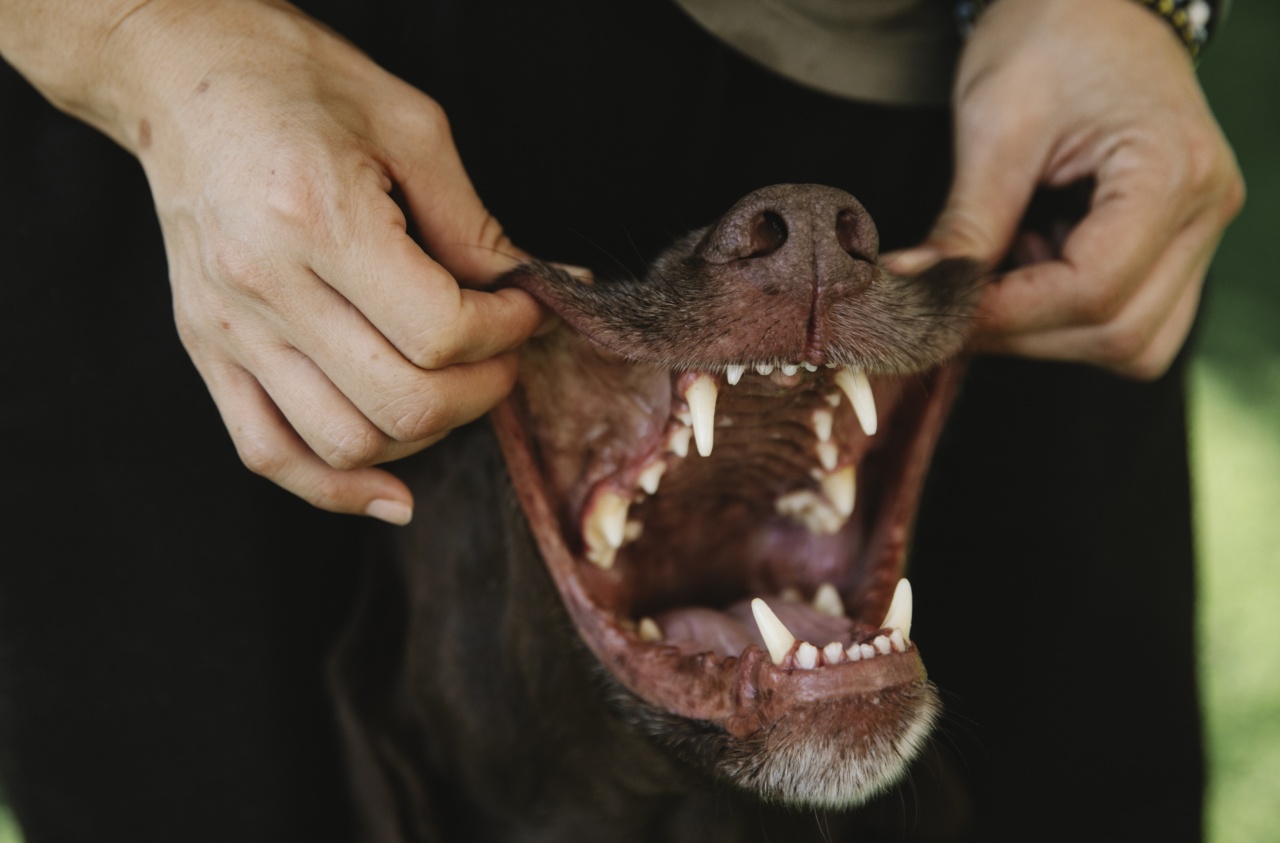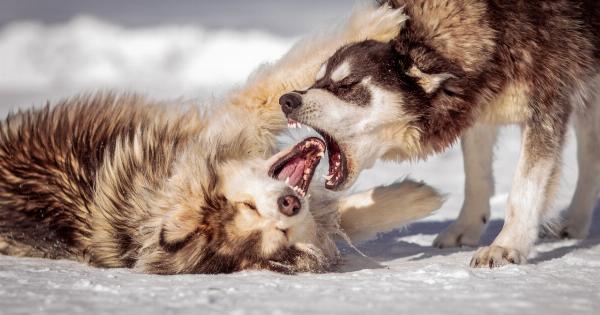Dogs are known for their expressive nature, and one common behavior that often raises concern in pet owners is when they show their teeth.
While it might seem alarming or aggressive to see a dog baring its teeth, it is essential to understand that this behavior is not always indicative of aggression. Dogs show their teeth for various reasons, and it is crucial to interpret their behavior correctly to ensure both their and our safety.
In this article, we will explore the different reasons why dogs show their teeth and gain insight into the complex world of canine behavior.
H2 Title 1: The Language of Teeth
Dogs have a unique way of communicating their needs, emotions, and boundaries through body language. Their teeth play a significant role in this communication system.
By showing their teeth, dogs can convey a range of messages, from warning signals to expressing anxiety or fear. It is crucial to remember that the context and accompanying body language of a dog are vital for accurately interpreting why they are showing their teeth.
H2 Title 2: Warning Signs
One of the most common reasons why dogs show their teeth is to give a warning. This behavior serves as a communication tool to express discomfort or a desire for space.
If a dog feels threatened or stressed, they may display their teeth to indicate that they are becoming increasingly uncomfortable. It is essential to respect a dog’s warning signs in these situations and give them the space they need. Ignoring these signals can lead to further escalation and potentially dangerous interactions.
H2 Title 3: Fear and Anxiety
Dogs can also show their teeth when they are fearful or anxious. In these instances, the dog may be trying to communicate that they are uncomfortable or scared. It is vital to recognize these signs and act accordingly to alleviate their anxiety.
Approaching a fearful or anxious dog with caution and giving them time to adjust to new environments or people can help reduce their stress levels and prevent any negative reactions.
H2 Title 4: Pain and Discomfort
Another reason why dogs may show their teeth is if they are in pain or discomfort. When dogs are experiencing physical discomfort or injury, they may display their teeth as a defensive mechanism.
It is their way of communicating that they are in pain and need assistance. If your dog suddenly starts showing their teeth without any apparent provocation, it is essential to check for any signs of injury or discomfort and consult a veterinarian if necessary.
H2 Title 5: Territorial Behavior
Dogs are naturally territorial creatures, and they may show their teeth to protect their space or belongings. This behavior is commonly observed when another dog or unfamiliar person approaches an area that the dog considers theirs.
By displaying their teeth, dogs establish boundaries and warn others to back off. It is crucial to respect a dog’s territorial behavior and avoid putting them in situations where they feel the need to defend their space.
H2 Title 6: Playful Behavior
Surprisingly, dogs may also show their teeth during play. When engaged in a play session, dogs often display what is known as a “play smile” or a “play bow,” which involves baring their teeth.
This behavior is typically accompanied by a wagging tail and a relaxed posture, indicating that the dog is enjoying the interaction and inviting others to participate. It is essential to recognize the difference between play behavior and aggressive behavior to ensure a positive play experience for all involved.
H2 Title 7: Social Hierarchy
In some cases, dogs may show their teeth to assert their position in the social hierarchy. This behavior is often seen between dogs and can be part of the natural dominance establishment process.
However, it is crucial to monitor and manage these interactions to prevent any aggression from escalating. Proper socialization and training can help prevent any negative behavior associated with establishing social hierarchy.
H2 Title 8: Breed Characteristics
It is important to note that some dog breeds have specific characteristics that may make them more prone to showing their teeth.
Breeds that are known for their strong guarding instincts, such as German Shepherds or Rottweilers, may be more likely to display this behavior. However, this does not mean that all dogs of these breeds will show aggressive behavior. Understanding breed characteristics can help owners anticipate and address potential issues.
H2 Title 9: Training and Socialization
Proper training and socialization play a vital role in a dog’s ability to communicate effectively and appropriately.
By exposing a dog to various environments, people, and situations from an early age, we can help them develop the necessary skills to navigate the world around them. Training can also teach dogs alternative ways to express themselves and cope with situations that may otherwise cause them to show their teeth.
Positive reinforcement techniques are especially helpful in shaping desired behaviors and reducing the likelihood of aggressive responses.
H2 Title 10: Seeking Professional Help
If you have concerns about your dog showing their teeth or displaying any aggressive behavior, it is essential to seek professional help from a qualified dog behaviorist or trainer.
They can assess your dog’s behavior, provide guidance on managing their response, and develop a training plan tailored to your dog’s needs. Early intervention can help prevent potentially dangerous situations and ensure the well-being of both your dog and others.




























